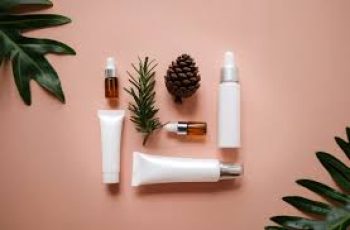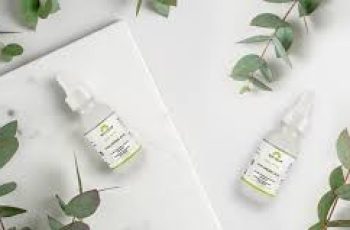
Squalane vs. Hyaluronic Acid: Which One is Better for Your Skin?
In the world of skincare, few ingredients have gained as much popularity and praise as squalane and hyaluronic acid, both widely recognized for their exceptional hydrating properties.
From hydrating serums and moisturizers to facial cleansers and under-eye creams, these two ingredients are seen as essentials in many modern skincare routines.
Despite their similarities in popularity and benefits, squalane and hyaluronic acid serve different purposes and suit different skin needs, making it important to understand how they work.
Deciding between them—or even choosing to use both—depends on your unique skin concerns, product preferences, and how your skin responds to different types of hydration.
What is Squalane?
Squalane is a stable, hydrogenated form of squalene—a lipid that naturally occurs in human sebum and plays a major role in keeping skin soft, moisturized, and protected.
Squalene in its original form is highly beneficial, but its instability makes it prone to oxidation, which is why the more stable squalane is used in skincare formulations.
Thanks to its enhanced stability, squalane is less likely to spoil or irritate the skin, making it ideal for long-term use in both daily and targeted skincare routines.
Squalane mimics the skin’s natural oils, replenishes lost hydration, supports the skin barrier, and delivers a smooth, non-greasy finish that suits many skin types.
Dr. Blair Murphy-Rose, a board-certified dermatologist, highlights squalane’s role as an emollient that softens the skin and locks in hydration, preventing water loss.
In addition to its moisturizing benefits, squalane also offers antioxidant protection by neutralizing free radicals from environmental sources like UV rays and pollution.
Squalane is particularly effective for individuals with dry, flaky, or irritated skin, as it reinforces the skin’s natural moisture barrier and enhances overall resilience.
Because it’s non-comedogenic and lightweight, squalane can be used by those with acne-prone skin without the risk of clogged pores or excessive oiliness.
It absorbs quickly, provides deep nourishment, and leaves the skin soft and smooth, making it a favorite for both daytime and nighttime skincare routines.
What is Hyaluronic Acid?
Hyaluronic acid is a naturally occurring sugar molecule found in the skin, joints, and eyes, and it serves a key role in maintaining hydration by attracting and retaining moisture.
This powerful humectant can hold up to 1,000 times its weight in water, making it one of the most hydrating substances used in modern cosmetic and skincare products.
By drawing moisture from the air and binding it to the skin, hyaluronic acid delivers a plumping, smoothing effect that reduces the appearance of fine lines and dullness.
Dr. Rebecca Marcus, dermatologist and founder of Maei MD, states that hyaluronic acid has an immediate visible effect, making the skin look dewy, refreshed, and firmer.
Due to its lightweight and non-oily texture, hyaluronic acid is especially well-suited for oily, combination, and acne-prone skin that needs hydration without heaviness.
It is frequently found in serums, creams, and under-eye treatments because of its fast-absorbing nature and effectiveness at improving moisture content and elasticity.
One of its most attractive qualities is its versatility—it works well for all skin types and can be layered with virtually any product in a skincare regimen.
Squalane vs. Hyaluronic Acid: What’s the Difference?
Although both ingredients boost skin hydration, their chemical structures and mechanisms of action are quite different, giving them unique advantages depending on your goals.
Squalane is a lipid, meaning it’s oil-based and designed to seal moisture into the skin by mimicking the skin’s natural oils and preventing water loss.
Hyaluronic acid, in contrast, is a water-binding molecule—a humectant—that draws hydration from the environment and binds it to the outer layer of the skin.
Because of this, hyaluronic acid provides immediate hydration benefits, while squalane is better at locking in that hydration and reinforcing the skin’s barrier.
Hyaluronic acid should typically be applied to damp skin so that it can pull moisture in effectively and prevent skin from feeling tight or dry after application.
Squalane, on the other hand, can be used as a final step in your skincare routine to trap existing moisture and leave the skin feeling nourished and protected.
In terms of feel and texture, hyaluronic acid is often found in gel or serum form, whereas squalane typically comes in oils or oil-based formulations that feel silky.
Hyaluronic acid benefits all skin types but is especially good for oily and acne-prone skin that fears heavier moisturizers, while squalane shines for dry or mature skin.
Can You Use Squalane and Hyaluronic Acid Together?
Absolutely—squalane and hyaluronic acid work beautifully together because they hydrate in complementary ways: one draws moisture in, and the other locks it in place.
To layer them correctly, start with hyaluronic acid while your skin is still slightly damp to ensure it pulls moisture into the skin effectively.
Once the hyaluronic acid has been absorbed, apply squalane over it to create a protective barrier and prevent water from evaporating.
This duo is especially effective in dry climates or during colder months when the air lacks humidity and the skin needs help maintaining its hydration levels.
Many skincare products are now formulated to contain both ingredients, offering dual-action hydration in one bottle for maximum convenience and skin-plumping results.
However, if you’re layering products individually, always apply the lighter product (hyaluronic acid) first, followed by the heavier product (squalane) for best absorption.
Which One Should You Choose?
If your skin feels rough, flaky, or tight, squalane might be the better option, as it restores lost lipids and provides long-lasting nourishment.
If your main concern is dehydration, fine lines, or a lack of plumpness, hyaluronic acid is the go-to ingredient for delivering immediate hydration and a refreshed look.
Those with oily or breakout-prone skin may prefer hyaluronic acid because it hydrates without leaving behind an oily residue or clogging pores.
Squalane is ideal for anyone with a compromised skin barrier, mature skin, or anyone dealing with dry patches, irritation, or seasonal dryness.
Both ingredients are considered gentle and safe for sensitive skin and can be used twice daily if desired, depending on your skin’s response.
Most people benefit from incorporating both into their routine for a balanced, multi-layered approach to hydration and skin barrier health.
Conclusion: Why Not Both?
Squalane and hyaluronic acid are both outstanding skincare ingredients, each with their own strengths, making them excellent options for nearly every skin type.
While hyaluronic acid offers instant hydration by pulling water into the skin, squalane reinforces the skin’s protective barrier and keeps that hydration locked in longer.
Choosing between them doesn’t have to be an either/or decision—using both ingredients in tandem can deliver optimal hydration, resilience, and a smoother complexion.
Start by understanding your skin’s unique needs, whether it’s dryness, dullness, oiliness, or sensitivity, and then select the product or combination that fits best.
With consistent use, both hyaluronic acid and squalane can improve your skin’s texture, tone, and hydration levels, making them true heroes in any skincare routine.
Whether used individually or together, these powerhouse ingredients can elevate your skincare game and give you healthier, more radiant skin all year long.



